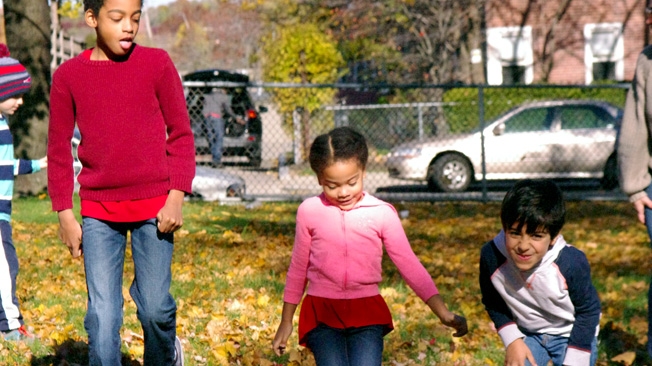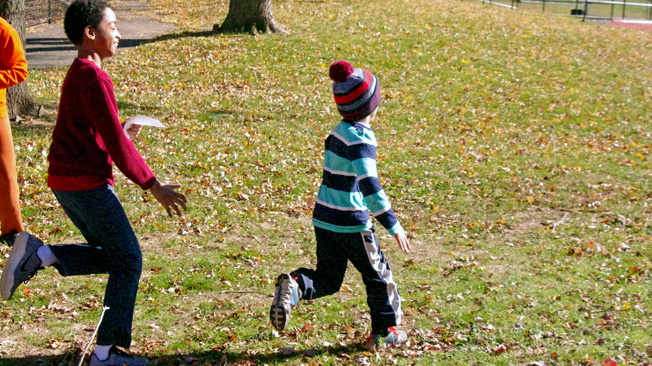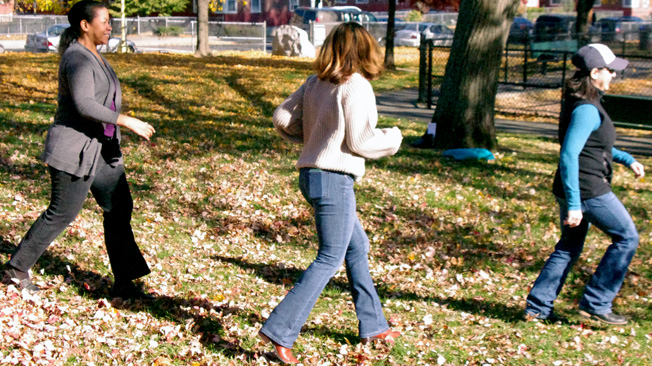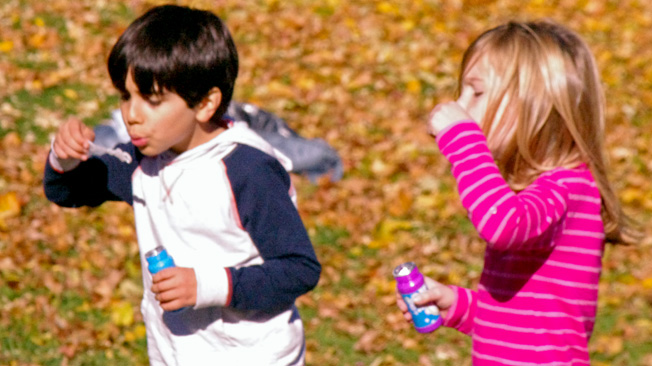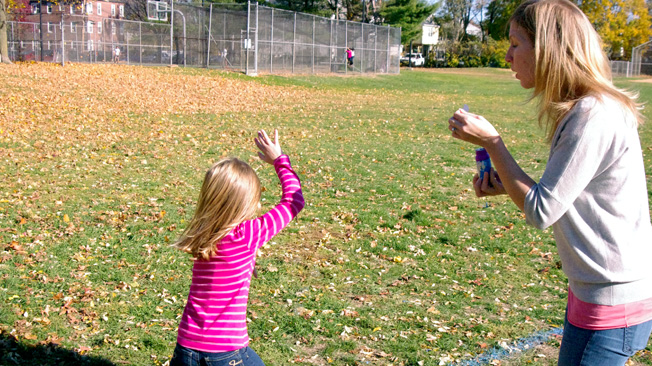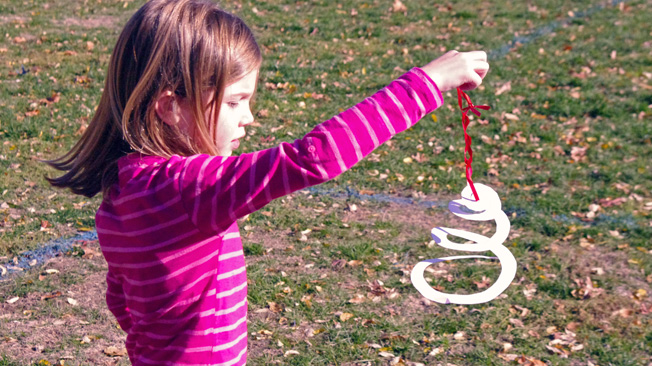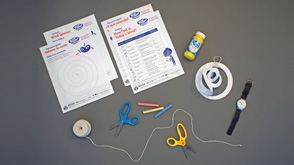Wild Wind
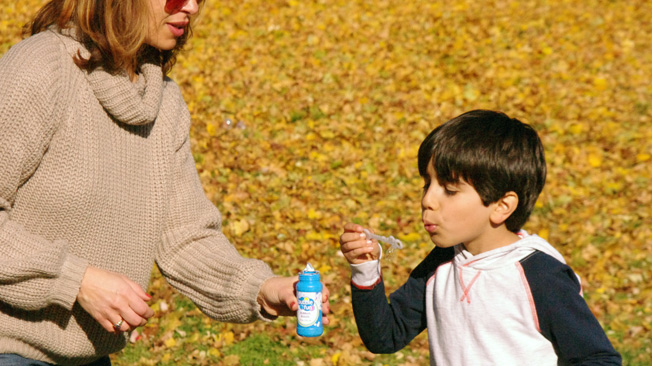
What Is This Activity?
How does wind flow through a city? Families use bubbles to observe wind speed and direction, and to test how buildings and streets affect wind flow.
Introduction
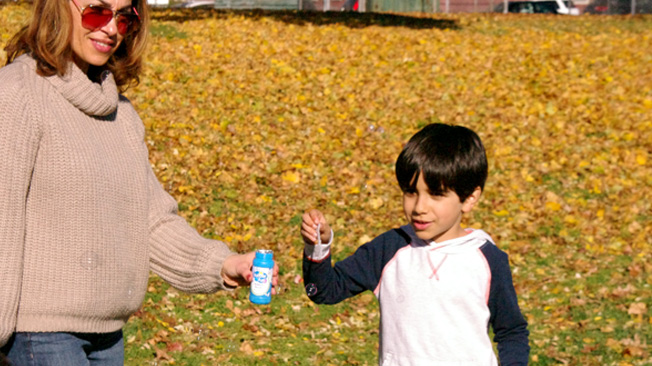
Learning Goals
Big Science Idea:
- City structures change the direction and speed of wind. We can observe wind direction and speed by the wind’s impact on bubbles, leaves, and other objects.
Skills kids will use to investigate it:
Predict, observe, measure, and discuss wind speed and direction and its impact on objects
Use observations to make a decision about the best place to hold a bubble contest
Observe and communicate how city structures block wind, channel it, or create drafts
How Do You Get Ready?
Read the activity and gather the materials.
Make at least one Wind Spinner using the “Wind Spinner Template” and following the directions on the “Wind Spinner” handout.
Print copies of the “How Fast Is Today’s Wind” handout and “Wind Spinner” handout and template for families. You may want to make extra copies of the template for families take home.
Scout out a suitable open area near buildings: a park, schoolyard, or basketball court, for example.
Mark off a distance of 10 meters (about 30 feet) in your outdoor space (for the warm-up) with the ribbons or chalk.
Troubleshoot any safety concerns (traffic, poison ivy, sharp objects, etc.).
If you don’t plan to show “The Manta Ray Mystery” video that is paired with this activity on the website, watch it ahead of time and jot down concepts to share with families during the activity.
Warm-up 8–10 minutes
(Science Skills: Predict, observe, measure, and discuss wind speed and its impact on objects)
Run Like the Wind? Discuss: Can you run faster than the wind can blow? Can the world’s fastest person?
Time kids and adults as they race the 10-meter distance you marked.
Explain that the world’s fastest runners cover that distance in less than one second! How do the times of kids and their families compare? (Two seconds for the kids would be excellent. Very fast kids run roughly 8 to 12 miles per hour.) Olympic record holders run nearly 28 mph.
Ask: Can the wind blow faster than 28 mph? Have the families predict: What’s the fastest that wind can blow? What would a super-fast wind feel like? What could it do to objects? Tell families they will revisit their predictions later.
Hand out the chart “How Fast Is Today’s Wind?” Review the art on the handout or read it aloud to families. Ask: What kind of wind blows 28 mph? What can a “strong breeze” do to a tree? (Move large branches.)
Encourage everyone to look for and point out signs of wind flow: Moving leaves, swaying branches, a waving flag, rattling street signs, blowing hair, swirling dust or papers, etc. Have families use those observations and the chart to tell how fast the wind is blowing today.
Activity 30–40 minutes
Follow the Wind
(15–20 minutes)
(Science Skills: Predict, observe, and compare the speed and direction of wind and its impact on objects; use observations to make a decision)
Ask: Wind is invisible, so how do you know it’s there?
Have everyone copy your actions as you turn around slowly in place. Ask: Can you feel wind on your face? Can you tell which direction it is blowing?
Hand out the bubbles to families. Ask kids to predict: How far and in what direction will the bubbles travel? Why do you think so? Make sure they give reasons for their predictions, such as: “There’s almost no wind, so the bubbles won’t go far.”
Give families five to 10 minutes to openly explore how and where the wind blows the bubbles. Have families blow bubbles in all directions: Downwind, upwind, crosswind, straight up, and any other way they can think of! Tell them to just let the bubbles drift and not to pop them.
As they explore, ask the kids: Is wind blowing in the same direction everywhere? At the same speed? Where’s the windiest spot?
Ask: Which locations will make the bubbles travel the farthest if we have a bubble contest?
Hold the bubble contest:
Choose a suggested location.
Ask participants to find a partner and pair up.
Have all pairs line up behind a starting line.
One member of the pair blows the bubbles while the other member runs alongside the bubbles and stands where the farthest bubble lands or pops.
The winner is the pair that is farthest apart. Ask: Is there a better starting spot, with stronger or steadier wind? Have families choose their own starting places and repeat the bubble race. For older or more mature children: Add tougher contest challenges, such as keeping a bubble from hitting the ground as long as possible or landing a bubble on a target spot by choosing a strategic launch point and then waving arms and blowing to steer it.
Windy City
(15–20 minutes)
(Science Skills: Observe how city structures block wind, channel it, or create drafts)
Ask kids to share their experiences with wind.
Explain that buildings block the wind, but they can also channel it or make it flow faster down a narrow street. Kids might have observed this change in speed in a stream or river, where narrow parts move faster and wider parts move slower.
Discuss: Have you seen paper or leaves rise up into the air on a hot day? What might cause that? Explain that when a street heats up, the hot air rises rapidly. That’s called an updraft. (Look for birds circling high above—gliding on updrafts to save energy.) A downdraft is cooler air that is falling.
Demonstrate how to use the Wind Spinner. Have a volunteer look at the spinner from above. Which way is it twirling? If clockwise (to the right), the air is rising; if counterclockwise, it is falling.
Give families a copy of the Wind Spinner handout, give each person a copy of the template. Review the handouts with them. Give them scissors and have them make spinners. If you have time, have the families decorate their Wind Spinners before cutting them out.
Encourage them to search for updrafts and downdrafts near buildings and water fountains, over hot pavement, in shaded areas, etc.
Move from family to family and offer support and encouragement.
Wrap-up 5–10 minutes
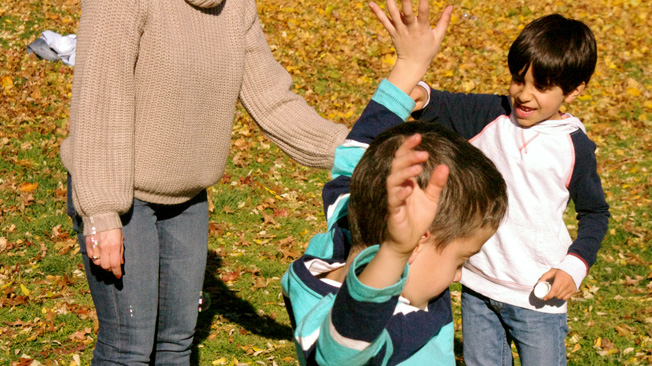
(Science Skills: Communicate how city structures block wind, channel it, or create drafts)
Gather the group together and take a guided tour of each pair's habitat.
Wonder aloud: How fast was the wind today? How fast can wind blow? Is there a “top speed”? What kind of damage could super-fast wind do? Revisit kids’ speed predictions if you did the warm-up. (Tornadoes generate the fastest measured wind speeds, at just over 300 miles per hour, and can lift locomotives off of train tracks, for example.)
For fun, have everyone pretend that they are trying to walk in the face of a super-fast wind.
Ask: What are ways that buildings affect wind flow in a city? (Block it, channel it, create updrafts and downdrafts, make wind swirl in circles.) Explain that the wind can make very tall buildings sway like trees!
Give families additional copies of the “Wind Spinner” Template to repeat the activity in their neighborhoods. Encourage them to take home the “How Fast Is the Wind?” handout to check the wind speed every day. Finally, give them the “Explore Weather Around You” handout to provide them with more ideas on how to continue investigating weather together.
Explore Some More
DIY Wind Scale (Beaufort)
Think about wind as a group to come up with a “Wind Feel Scale” from 1 to 10. For example, a “1” could mean you feel no wind at all, a “2” could mean a soft touch on your skin, a “3” could mean your hair moves, and so on. How would families describe the strongest winds on the scale?

